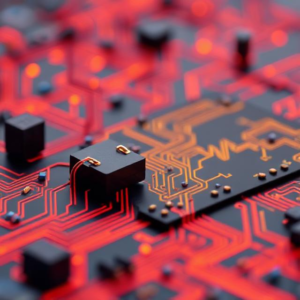Practical Examples and Case Studies in Circuit Simulation
Circuit simulation is a powerful tool used to design, analyze, and test electronic circuits without physically building them. Engineers and designers rely on software to model electrical circuits, identify potential issues, and optimize designs before constructing them. This approach can save both time and money while ensuring the reliability and efficiency of electronic systems.

Here are some practical examples and case studies demonstrating the real-world applications of circuit simulation.
1. Example 1: Power Supply Design and Optimization
Background:
A company designing a power supply for a new consumer product needed to ensure that the voltage output was stable and met the device’s requirements. The traditional approach would have been to build the power supply first and then test it, which could be time-consuming and expensive.
Simulation:
Using circuit simulation software, the design team was able to create a detailed model of the power supply circuit, including components such as resistors, capacitors, and transistors. The software allowed them to simulate how the circuit would behave under different conditions, such as varying input voltages or different load scenarios.
Outcome:
By simulating the power supply, the team identified potential problems with the voltage regulation and optimized the design before building the prototype. This saved both time and money, as they could immediately address issues like overheating and power inefficiencies, ensuring the final product was reliable.
2. Example 2: Signal Processing Circuit for Audio Devices
Background:
A manufacturer of audio devices needed to design a signal processing circuit that would filter and amplify sound signals for their new product. This circuit had to meet specific performance criteria, such as low noise and high fidelity.
Simulation:
The design team used circuit simulation software to model the audio processing circuit, simulating various components like amplifiers, filters, and equalizers. The simulation allowed the team to test different configurations for frequency response, gain, and noise levels.
Outcome:
By simulating the circuit before physical testing, the team was able to experiment with different filter designs and amplifier settings to find the best combination that met the audio specifications. This reduced the number of hardware prototypes needed and sped up the development process, ultimately delivering a high-performance audio device.
3. Case Study 1: Automotive Electronics Simulation
Background:
An automotive company needed to develop an advanced driver assistance system (ADAS) that involved complex sensors, processors, and communication circuits. These systems required precise timing and reliability, as any malfunction could lead to serious safety risks.
Simulation:
The company used a combination of circuit and system-level simulation tools to model the electronics within the ADAS. This included simulating the communication between sensors (e.g., cameras, radar), microcontrollers, and the central processing unit (CPU). The team tested the power consumption, signal integrity, and fault tolerance of the system under various driving conditions.
Outcome:
By simulating the entire system, the team was able to identify and address timing issues that could cause miscommunication between sensors and processors. They also optimized the power consumption to extend battery life in electric vehicles. The simulation process enabled the team to verify the design before moving to hardware testing, reducing development time and ensuring a safer, more efficient system.
4. Case Study 2: PCB Design for Mobile Phones
Background:
A mobile phone manufacturer was developing a new model and needed to design the printed circuit board (PCB) for the device. The PCB had to support multiple high-speed connections for features like wireless charging, high-speed data transfer, and a multi-core processor.
Simulation:
Using circuit simulation tools, the design team modeled the entire PCB, considering signal traces, impedance matching, and power distribution. The simulation allowed them to predict the effects of signal crosstalk, electromagnetic interference (EMI), and thermal issues.
Outcome:
The simulation highlighted several areas where the PCB design could be improved to reduce EMI and signal loss. The team adjusted trace widths and optimized component placement before manufacturing the PCB. This resulted in a faster and more reliable mobile phone, with fewer hardware revisions during the prototyping phase.
5. Example 3: Solar Power System Design
Background:
A renewable energy company wanted to design a solar power system for a large building. The system needed to convert sunlight into electricity efficiently, with minimal energy loss.
Simulation:
The team used circuit simulation software to model the solar panels, inverters, and energy storage systems. The simulation took into account factors such as sunlight intensity, panel orientation, and shading effects. It also simulated different weather conditions to understand how the system would perform under varying circumstances.
Outcome:
By simulating the solar power system, the team optimized the placement of panels and selected the most efficient inverter configuration. They were also able to predict the energy output over different seasons, ensuring the system met the building’s energy needs without over-sizing or under-sizing the components.
Conclusion:
Circuit simulation has become an essential part of modern electronic design. It provides an efficient, cost-effective way to test, optimize, and verify circuit designs before committing to physical prototypes. The examples and case studies discussed demonstrate how simulation can be applied across various industries, from consumer electronics to automotive systems and renewable energy. By reducing errors early in the design process, simulation tools help engineers improve product performance, minimize risks, and accelerate development. As technology continues to advance, the role of circuit simulation will only grow in importance, enabling more innovative and reliable electronic systems.











